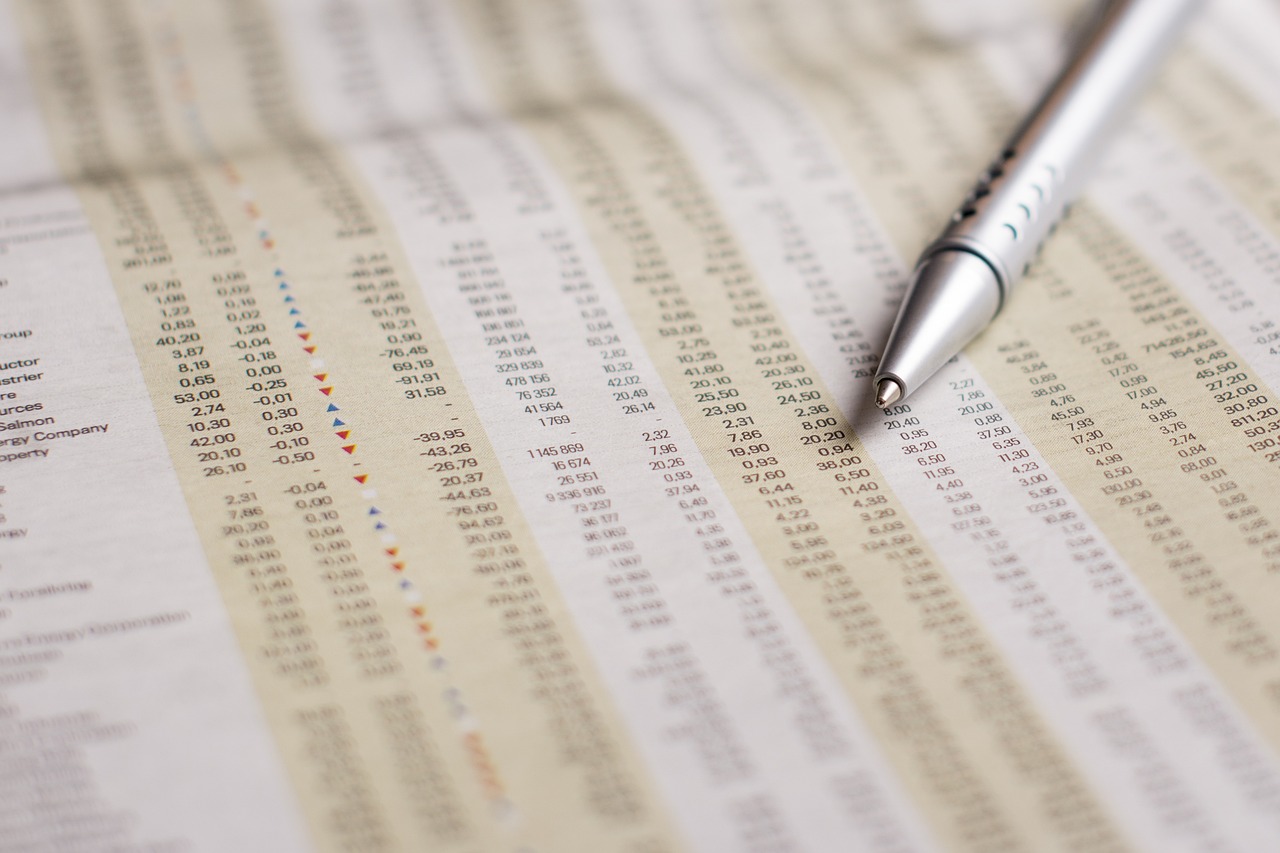Market Predictions - How to Forecast Price Movements
In the fast-paced world of finance, making accurate market predictions can feel like trying to catch smoke with your bare hands. The ever-changing landscape of price movements can be daunting, but fear not! This article dives deep into the methodologies and tools that can help you forecast those elusive price shifts. Whether you're an experienced investor or just dipping your toes into the market, understanding how to read trends and indicators is essential for making informed decisions.
Identifying market trends is crucial when it comes to making accurate predictions. Think of trends as the currents in an ocean; they guide the direction of price movements over time. Generally, there are three types of trends: uptrends, downtrends, and sideways trends. An uptrend indicates that prices are generally increasing, while a downtrend suggests a decrease. Sideways trends, on the other hand, indicate that prices are moving within a range without a clear direction. Recognizing these trends allows investors to align their strategies accordingly, making it easier to ride the waves of the market.
When it comes to forecasting price movements, technical analysis employs a variety of tools and indicators. These instruments help traders decipher the market's language, revealing hidden patterns and potential future movements. Some of the most popular tools include:
- Moving Averages: These smooth out price data to help identify trends over a specific period.
- Relative Strength Index (RSI): This momentum oscillator measures the speed and change of price movements, indicating overbought or oversold conditions.
- Moving Average Convergence Divergence (MACD): This indicator shows the relationship between two moving averages, helping traders spot potential buy or sell signals.
By mastering these tools, investors can gain a clearer picture of market dynamics and make more informed predictions.
Chart patterns are like the fingerprints of market behavior; they provide visual insights that can signal potential price movements. Common patterns such as head and shoulders, flags, and triangles can be incredibly revealing. For instance, a head and shoulders pattern often indicates a reversal in trend, while flags can suggest a continuation of the current trend. Recognizing these patterns can give traders a significant edge in predicting future price movements.
Understanding support and resistance levels is fundamental for interpreting price action. Support levels act like a safety net, preventing prices from falling further, while resistance levels act as a ceiling, preventing prices from rising above a certain point. When prices approach these levels, they often experience reversals or breakouts. For example, if the price breaks through a resistance level, it may indicate a strong upward movement. Conversely, if it falls below a support level, it could signal a downward trend. These insights can be invaluable for making timely trading decisions.
Volume analysis is another critical component of technical analysis. It helps gauge the strength behind price movements. When prices rise with high volume, it often indicates strong buying interest, suggesting that the trend may continue. Conversely, if prices rise but volume is low, it may signal a lack of conviction in the move. By interpreting volume trends, traders can confirm or question their price predictions, leading to more accurate forecasting.
Indicators and oscillators are essential tools in technical analysis, providing further insights into market behavior. Popular indicators such as Bollinger Bands and the Stochastic Oscillator play crucial roles in forecasting price trends. For instance, Bollinger Bands help identify volatility and potential price reversals, while the Stochastic Oscillator indicates momentum by comparing a security's closing price to its price range over a specific period. Mastering these tools can significantly enhance your ability to predict market movements.
While technical analysis focuses on price movements, fundamental analysis looks at the underlying economic factors that drive these changes. Economic indicators, news events, and overall market sentiment all play pivotal roles in influencing market behavior. By understanding these factors, investors can make more informed predictions about future price movements.
Key economic indicators such as GDP, unemployment rates, and inflation can significantly influence market behavior. For example, a rising GDP often signals economic growth, which can lead to increased investor confidence and rising prices. Conversely, high unemployment rates can indicate economic trouble, potentially leading to falling prices. By keeping an eye on these indicators, traders can better forecast market trends and price movements.
Market sentiment reflects the overall attitude of investors toward a particular market or asset. It can be gauged through various means, including surveys, news headlines, and social media sentiment analysis. Understanding market sentiment can provide valuable insights into potential price movements. For instance, if sentiment is overwhelmingly positive, it may indicate that prices are likely to rise, while negative sentiment could suggest the opposite. By analyzing sentiment, traders can position themselves advantageously in the market.
In the world of market predictions, combining technical and fundamental analysis can enhance forecasting accuracy. Each approach offers unique insights, and when used together, they create a more comprehensive strategy. For instance, a trader might use technical indicators to identify entry and exit points while considering fundamental factors to gauge the overall market environment. This holistic approach can lead to more informed trading decisions and improved outcomes.
1. What is the difference between technical and fundamental analysis?
Technical analysis focuses on price movements and patterns, while fundamental analysis examines economic indicators and news events that influence market behavior.
2. How can I identify market trends?
Market trends can be identified by analyzing price charts and recognizing patterns such as uptrends, downtrends, and sideways movements.
3. Why is volume analysis important?
Volume analysis helps confirm the strength behind price movements. High volume during price increases suggests strong buying interest, while low volume may indicate a lack of conviction.
4. Can I use both technical and fundamental analysis?
Absolutely! Combining both approaches can provide a more comprehensive understanding of market conditions and improve your forecasting accuracy.

Understanding Market Trends
Understanding market trends is like having a roadmap in the complex world of investing. Just as a traveler relies on maps to navigate unfamiliar territory, investors must identify and interpret trends to make informed decisions that can lead to profitable outcomes. Market trends are essentially the general direction in which prices are moving over a certain period, and recognizing these trends can significantly influence investment strategies.
There are three primary types of market trends that every investor should be aware of: uptrends, downtrends, and sideways trends. An uptrend is characterized by higher highs and higher lows, indicating a bullish market sentiment where investors are optimistic and buying pressure is prevalent. Conversely, a downtrend features lower highs and lower lows, signaling a bearish outlook where selling pressure dominates. Lastly, a sideways trend occurs when prices move within a relatively stable range, suggesting indecision among investors, and often leads to a buildup of volatility.
Recognizing these trends is crucial because they can help investors determine when to enter or exit trades. For instance, if you spot an uptrend, it might be a good time to buy, while a downtrend might signal a time to sell or short the asset. But how do you identify these trends? It’s not just about looking at the price; it involves analyzing various factors such as market sentiment, economic indicators, and even geopolitical events that can sway investor behavior.
Moreover, trends can be influenced by seasonality and market cycles. For example, certain sectors may perform better during specific times of the year due to seasonal demand. Similarly, understanding the broader market cycles can provide insights into potential trend reversals. To illustrate this, consider the following table that summarizes the three types of trends and their characteristics:
| Trend Type | Characteristics | Investor Sentiment |
|---|---|---|
| Uptrend | Higher highs and higher lows | Optimistic |
| Downtrend | Lower highs and lower lows | Pessimistic |
| Sideways Trend | Stable price range | Indecisive |
In conclusion, understanding market trends is an essential skill for any investor. It’s not just about recognizing patterns; it’s about interpreting the underlying forces that drive those patterns. By analyzing the market sentiment, economic indicators, and other relevant factors, investors can better position themselves to capitalize on price movements. So, the next time you’re looking at a chart, remember that trends are your friends, guiding you through the turbulent waters of the financial markets.

Technical Analysis Tools
When it comes to forecasting price movements in the market, play a pivotal role. These tools help traders and investors make sense of price data and identify potential future movements. By analyzing historical price patterns and market behavior, one can gain insights into trends that may influence future performance. But what exactly are these tools, and how can they be utilized effectively? Let's dive into some of the most popular technical analysis tools that can aid in your market predictions.
One of the cornerstone tools in technical analysis is the Moving Average (MA). This tool smooths out price data by creating a constantly updated average price. There are different types of moving averages, such as the Simple Moving Average (SMA) and the Exponential Moving Average (EMA). The SMA calculates the average price over a specific number of periods, while the EMA gives more weight to recent prices, making it more responsive to new information. Traders often use moving averages to identify trends and potential reversal points in the market.
Another critical tool is the Relative Strength Index (RSI), which measures the speed and change of price movements. The RSI ranges from 0 to 100 and is often used to identify overbought or oversold conditions in a market. An RSI above 70 typically indicates an overbought market, suggesting a potential price pullback, while an RSI below 30 indicates an oversold market, hinting at a possible price increase. This tool can be especially useful for traders looking to time their entries and exits effectively.
Then we have the Moving Average Convergence Divergence (MACD), another widely used tool that helps traders identify momentum and trend direction. The MACD consists of two lines—the MACD line and the signal line—along with a histogram that shows the difference between the two. When the MACD line crosses above the signal line, it can be a bullish signal, while a cross below can indicate a bearish trend. This tool is particularly effective in trending markets, helping traders confirm the strength of a trend before making a trade.
Chart patterns are visual representations of price movements that can reveal a lot about market behavior. Some common patterns include head and shoulders, flags, and triangles. These patterns can signal potential price movements, making them invaluable for traders. For instance, a head and shoulders pattern often indicates a reversal from a bullish trend to a bearish one, while flags can indicate a continuation of the current trend. Understanding these patterns can significantly enhance your ability to predict market movements.
Support and resistance levels are essential concepts in technical analysis. Support refers to a price level where a downtrend can be expected to pause due to a concentration of demand. Conversely, resistance is a price level where an uptrend can be expected to pause due to a concentration of selling interest. Identifying these levels can help traders anticipate potential reversals or breakouts, making them crucial for effective market analysis.
Volume analysis is another critical aspect of technical analysis. It helps traders gauge the strength behind price movements. A price movement accompanied by high volume is generally considered more significant than one with low volume. For example, if a stock breaks through a resistance level with substantial volume, it may indicate a strong trend. Understanding volume trends can provide additional confirmation for price predictions, enhancing the overall accuracy of your market forecasts.
Indicators and oscillators are essential tools in technical analysis that help traders make informed decisions. Popular indicators include Bollinger Bands and the Stochastic Oscillator. Bollinger Bands consist of a middle band (SMA) and two outer bands that represent volatility. When the price touches the upper band, it may indicate an overbought condition, while touching the lower band may suggest an oversold condition. Similarly, the Stochastic Oscillator compares a particular closing price to a range of prices over a certain period, helping traders identify potential buy or sell signals.
In summary, technical analysis tools are invaluable for anyone looking to forecast market price movements. By understanding and utilizing these tools effectively, traders can gain a significant edge in their decision-making processes. Whether you're just starting or are a seasoned trader, mastering these technical analysis tools can enhance your market predictions and ultimately lead to more successful trading strategies.
- What is technical analysis? Technical analysis is the study of past market data, primarily price and volume, to forecast future price movements.
- How do moving averages work? Moving averages smooth out price data to identify trends over a specific period, helping traders make informed decisions.
- What is the significance of support and resistance levels? Support and resistance levels indicate potential price points where the market may reverse or break out, guiding traders in their strategies.
- How can I combine technical and fundamental analysis? By integrating both analyses, traders can gain a more comprehensive view of market dynamics and improve their forecasting accuracy.

Chart Patterns
Chart patterns are like the roadmaps of the trading world; they provide visual cues about potential future price movements based on historical data. Recognizing these patterns can be a game-changer for traders, as they often indicate where the market might head next. Just like reading the stars for navigation, understanding these patterns can help investors steer their portfolios in the right direction.
One of the most common chart patterns is the head and shoulders. This pattern resembles a head with two shoulders, and it typically signals a reversal in the trend. When you spot this formation, it’s like seeing a warning sign on the road; it tells you that a shift in momentum might be on the horizon. Traders often look for a confirmed breakout below the neckline to validate this pattern, which can lead to significant price declines.
Another important pattern is the flag, which usually appears after a strong price movement. Flags are characterized by a brief consolidation period, resembling a small rectangle that slopes against the prevailing trend. They signal that the market is taking a breather before continuing its journey in the same direction. Think of it as a runner pausing for a quick drink before sprinting off again!
Triangles are also prevalent in chart analysis. These patterns come in three varieties: ascending, descending, and symmetrical. Each type has its own implications for future price movements. For instance, an ascending triangle often indicates bullish sentiment, while a descending triangle suggests bearishness. Recognizing these formations is akin to reading the mood of a crowd; it gives you insights into the prevailing market sentiment.
To illustrate some of these concepts, let’s take a look at a table summarizing these common chart patterns and their implications:
| Chart Pattern | Description | Market Implication |
|---|---|---|
| Head and Shoulders | Reversal pattern with three peaks | Potential bearish reversal |
| Flags | Continuation pattern after a strong price movement | Continuation of the trend |
| Ascending Triangle | Higher lows with a flat top | Potential bullish breakout |
| Descending Triangle | Lower highs with a flat bottom | Potential bearish breakout |
| Symmetrical Triangle | Converging trendlines | Potential breakout in either direction |
Understanding these chart patterns is crucial for traders looking to enhance their forecasting abilities. They provide a framework for interpreting market behavior and can significantly improve decision-making. However, it’s essential to remember that no pattern is foolproof; they serve as guides rather than guarantees. Just as a weather forecast can change, so can market conditions. Therefore, combining chart pattern analysis with other tools and indicators can provide a more robust trading strategy.
- What is a chart pattern? A chart pattern is a recurring configuration of price movements that traders use to predict future price behavior.
- How reliable are chart patterns? While chart patterns can provide valuable insights, they should not be the sole basis for trading decisions. It's best to use them in conjunction with other analysis techniques.
- Can I trade based only on chart patterns? It’s advisable to combine chart patterns with fundamental analysis and other technical indicators for a more comprehensive trading strategy.

Support and Resistance Levels
When diving into the world of market predictions, understanding is like having a map in uncharted territory. These levels act as psychological barriers where price movements tend to stall or reverse, providing traders and investors with crucial insights into potential market behavior. Think of support as the floor that prevents prices from falling further, while resistance acts as the ceiling that keeps prices from rising indefinitely. Grasping these concepts can significantly enhance your ability to forecast price movements effectively.
Support levels are identified where a stock or asset has historically had difficulty falling below. This is often due to buyers stepping in at these price points, believing that the asset is undervalued. Conversely, resistance levels are where sellers tend to emerge, pushing the price down as they believe it is overvalued. Recognizing these levels can help traders make informed decisions about when to enter or exit a position.
To illustrate this further, let’s consider an example. Imagine a stock that has repeatedly bounced back after hitting a price of $50. This $50 mark becomes a significant support level. If the stock price approaches this level again, traders might expect it to hold, leading to a potential buying opportunity. On the flip side, if the same stock has struggled to surpass $70, that price point becomes a resistance level. If the price nears $70 again, traders may anticipate a sell-off, creating a potential shorting opportunity.
Understanding the dynamics of support and resistance can also be enhanced by considering the following factors:
- Volume: High trading volume at a support or resistance level can strengthen its significance. If a price breaks through a resistance level on high volume, it may indicate a strong bullish trend.
- Time Frame: The longer a price level holds as support or resistance, the more significant it becomes. A level that has been tested multiple times is often viewed as more reliable.
- Market Context: Economic news and events can influence these levels. For instance, positive earnings reports may shift resistance levels higher, while negative news can lower support levels.
Traders often use these levels in conjunction with other technical analysis tools to refine their strategies. For example, if a stock is approaching a strong support level, and the Relative Strength Index (RSI) indicates that it is oversold, the combination of these signals may suggest a buying opportunity. On the other hand, if the price is nearing a resistance level while the market sentiment is bearish, it might be wise to consider a selling strategy.
In summary, support and resistance levels are essential components of market analysis. They provide a framework for understanding price action and can guide traders in making more informed decisions. By combining these levels with other technical indicators and market sentiment, you can create a robust strategy that enhances your forecasting abilities. Remember, the market is a living entity, and staying attuned to these levels can help you navigate its ebbs and flows more effectively.
Q1: What are support and resistance levels?
A1: Support and resistance levels are price points where the price of an asset tends to stop and reverse. Support is where prices generally stop falling, while resistance is where prices typically stop rising.
Q2: How can I identify support and resistance levels?
A2: You can identify these levels by looking at historical price charts. Areas where the price has frequently bounced back or failed to break through can be marked as support or resistance.
Q3: Can support and resistance levels change?
A3: Yes, support and resistance levels can change over time due to market dynamics, economic news, and other factors. They are not static and should be monitored regularly.
Q4: How do volume levels impact support and resistance?
A4: High trading volume at a support or resistance level can reinforce its strength. A breakout through resistance on high volume, for example, suggests a strong trend, while a failure to break through on low volume may indicate weakness.

Volume Analysis
When diving into the world of market predictions, one cannot overlook the significance of . Volume, in simple terms, refers to the number of shares or contracts traded in a security or market during a given period. It acts as a crucial indicator of market strength and can provide valuable insights into potential price movements. Imagine trying to push a car; if you only have a couple of friends helping you, it’s going to be a struggle. But with a larger group pushing together, you can move that car much more easily. Similarly, high trading volume often indicates strong interest and conviction in a price move, while low volume can suggest the opposite.
Understanding volume trends can help investors gauge whether a price movement is likely to continue or reverse. For instance, if a stock price rises significantly but the volume remains low, it may be a sign that the upward trend lacks support and could soon falter. On the flip side, if you see a stock price surging with high volume, it often signals that many traders are buying in, which can lead to further price increases. Thus, volume analysis acts as a confirmation tool for price movements.
Let’s break down some key aspects of volume analysis:
- Volume Spikes: Sudden increases in volume can indicate significant events, such as earnings reports or market news, which can lead to price volatility.
- Volume Trends: Observing whether volume is increasing or decreasing over time can reveal underlying market sentiment. An upward trend in volume often suggests growing interest, while a downward trend may indicate waning enthusiasm.
- Volume Relative to Price: Analyzing volume in conjunction with price movements can enhance your understanding. For example, if prices are rising and volume is also increasing, it usually strengthens the bullish sentiment.
To illustrate the importance of volume analysis, consider the following table that outlines a hypothetical stock's price movement alongside its trading volume:
| Date | Price ($) | Volume |
|---|---|---|
| Day 1 | 50 | 1,000 |
| Day 2 | 52 | 1,500 |
| Day 3 | 54 | 2,000 |
| Day 4 | 53 | 1,200 |
| Day 5 | 55 | 2,500 |
In this example, you can see that as the price increases, the volume also tends to rise, particularly on Day 5, where we see a significant price increase coupled with a volume spike. This scenario suggests strong buying interest, which could indicate a continuation of the upward trend.
In summary, volume analysis is not just a supplementary tool; it's a vital component of a comprehensive market forecasting strategy. By paying attention to volume alongside price movements, traders can make more informed decisions and potentially improve their trading outcomes. As the saying goes, "The trend is your friend," and understanding volume can help you stay on the right side of that trend.

Indicators and Oscillators
When it comes to technical analysis, indicators and oscillators are like the compass and map for traders navigating the tumultuous seas of the financial markets. They provide essential insights into market trends, helping investors make informed decisions about when to enter or exit trades. Indicators, such as moving averages, offer a smoothed view of price movements over time, while oscillators, like the Relative Strength Index (RSI), help identify potential overbought or oversold conditions. By understanding these tools, traders can enhance their ability to predict price movements.
Indicators are typically based on price and volume data, and they can be categorized into two main types: leading and lagging indicators. Leading indicators, such as the Stochastic Oscillator, aim to predict future price movements, while lagging indicators, like Moving Averages, confirm trends after they have occurred. This distinction is vital for traders, as it helps them understand when to act on a signal or wait for confirmation.
One popular indicator is the Bollinger Bands, which consists of a middle band (the moving average) and two outer bands that represent price volatility. When the price approaches the upper band, it may indicate that the asset is overbought, while a price near the lower band could suggest it is oversold. This visual representation helps traders gauge potential reversal points and manage risk effectively.
Oscillators, on the other hand, are particularly useful in ranging markets where prices move sideways. The Stochastic Oscillator is a prime example, measuring the momentum of price movements. It operates on a scale of 0 to 100, with values above 80 indicating overbought conditions and values below 20 suggesting oversold conditions. Traders can use this information to anticipate potential price corrections. Additionally, the MACD (Moving Average Convergence Divergence) is another widely-used oscillator that provides insights into the strength and direction of a trend by comparing two moving averages.
To illustrate how these indicators and oscillators can be applied in real-world trading, consider the following table that summarizes their key characteristics:
| Indicator/Oscillator | Type | Purpose |
|---|---|---|
| Bollinger Bands | Indicator | Measures price volatility and identifies overbought/oversold conditions |
| Stochastic Oscillator | Oscillator | Identifies momentum and potential reversal points |
| MACD | Oscillator | Indicates trend strength and direction |
In conclusion, mastering indicators and oscillators is essential for any trader looking to improve their market predictions. By combining these tools with other analytical methods, traders can develop a more robust strategy that not only identifies potential price movements but also manages risk effectively. It’s like having a well-rounded toolkit at your disposal—each tool serving a unique purpose but working harmoniously to help you navigate the complex world of trading.
- What is the difference between an indicator and an oscillator? Indicators provide information about price trends, while oscillators measure momentum and can indicate overbought or oversold conditions.
- How can I use indicators and oscillators together? By combining indicators that confirm trends with oscillators that signal potential reversals, traders can enhance their decision-making process.
- Are indicators and oscillators foolproof? No, while they can provide valuable insights, they should be used in conjunction with other analysis methods and risk management strategies.

Fundamental Analysis Overview
When it comes to predicting market price movements, fundamental analysis serves as a cornerstone for many investors. Unlike technical analysis, which focuses on price charts and patterns, fundamental analysis digs deeper into the underlying factors that can influence a market's direction. Think of it as the detective work behind the scenes; while charts can tell you what has happened, fundamental analysis helps you understand why it happened and what might happen next. By examining economic indicators, company performance, and market sentiment, investors can make more informed decisions that go beyond mere speculation.
At its core, fundamental analysis revolves around several key components, including economic indicators, news events, and market sentiment. Each of these factors plays a significant role in shaping investor behavior and, consequently, price movements. For instance, when economic indicators like GDP growth or unemployment rates are released, they can cause immediate reactions in the market. Investors often interpret these figures to gauge the overall health of the economy, which can lead to buying or selling pressure on various assets.
To better illustrate the importance of these components, let's take a look at some of the most influential economic indicators:
| Indicator | Impact on Market |
|---|---|
| GDP Growth Rate | Indicates economic health; strong growth often leads to bullish markets. |
| Unemployment Rate | High unemployment can signal economic distress, leading to bearish sentiment. |
| Inflation Rate | Rising inflation can erode purchasing power, impacting consumer spending and market stability. |
In addition to these indicators, market sentiment plays a crucial role in shaping price movements. Market sentiment reflects the overall attitude of investors toward a particular asset or the market as a whole. It’s often driven by news events, earnings reports, and geopolitical developments. For example, if a major company reports stellar earnings, it can create a wave of optimism, pushing its stock price higher. On the flip side, negative news can trigger panic selling, leading to sharp declines.
Understanding market sentiment can sometimes feel like reading the room at a party. Are people excited and engaged, or are they cautious and reserved? This sentiment can be gauged through various methods, including surveys and social media analysis. By combining these insights with traditional economic indicators, investors can gain a more nuanced view of market dynamics, enhancing their ability to forecast price movements accurately.
In conclusion, while technical analysis provides valuable tools for understanding market behavior, fundamental analysis offers a broader perspective that encompasses the economic and emotional factors at play. By integrating both approaches, investors can develop a more comprehensive strategy for predicting price movements, ultimately leading to more informed and confident investment decisions.
- What is fundamental analysis? Fundamental analysis is a method of evaluating securities by examining economic, financial, and other qualitative and quantitative factors.
- How does fundamental analysis differ from technical analysis? Fundamental analysis focuses on the underlying factors affecting an asset's value, while technical analysis looks at price movements and patterns.
- What are some key economic indicators to watch? Important indicators include GDP growth, unemployment rates, and inflation rates, as they can significantly impact market behavior.
- Why is market sentiment important? Market sentiment can influence price movements based on investor attitudes and reactions to news events, making it a crucial factor in forecasting trends.

Economic Indicators
When it comes to predicting market movements, serve as the compass guiding investors through the tumultuous seas of financial markets. These indicators, which are statistical data points that reflect the economic health of a country, are crucial for making informed investment decisions. Think of them as the pulse of the economy; if you can read them correctly, you can anticipate how the market might react. But what exactly are these indicators, and how do they influence price movements?
At their core, economic indicators can be categorized into three main types: leading, coincident, and lagging indicators. Leading indicators, such as stock market returns or new housing permits, tend to predict future economic activity. For instance, if you notice a surge in housing permits, it might suggest that the economy is gearing up for growth, prompting investors to buy stocks in construction companies. On the other hand, coincident indicators, such as GDP and employment levels, provide a snapshot of the current economic situation. Finally, lagging indicators, like unemployment rates and corporate profits, reflect the economy's past performance and can help confirm trends.
Understanding these indicators is crucial because they can significantly affect market sentiment. For example, if the unemployment rate drops, it often leads to increased consumer spending, which can push stock prices higher. Conversely, if inflation rates rise unexpectedly, fear may grip investors, causing them to sell off assets, thereby driving prices down. This interplay between economic indicators and market behavior highlights the importance of staying informed.
Let’s delve deeper into some of the most influential economic indicators:
- Gross Domestic Product (GDP): This measures the total value of all goods and services produced over a specific time period. A rising GDP typically signals a growing economy, which can boost investor confidence.
- Unemployment Rate: This indicates the percentage of the labor force that is unemployed and actively seeking employment. A lower unemployment rate is generally seen as a positive sign for the economy.
- Consumer Price Index (CPI): This measures the average change over time in the prices paid by consumers for a market basket of consumer goods and services. It’s a key indicator of inflation.
To illustrate the impact of these indicators, let's take a look at a simplified table of recent trends:
| Indicator | Current Value | Trend |
|---|---|---|
| GDP Growth Rate | 3.5% | Increasing |
| Unemployment Rate | 4.2% | Decreasing |
| CPI (Inflation Rate) | 2.1% | Stable |
By monitoring these indicators, investors can gain valuable insights into potential market movements. For instance, if GDP growth is strong while unemployment is low, it may be an opportune time to invest in equities. However, if inflation begins to rise rapidly, it could prompt a reevaluation of investment strategies, possibly shifting focus towards more stable assets like bonds.
In conclusion, economic indicators are vital tools in the arsenal of any investor looking to forecast market movements. They provide a framework for understanding the broader economic context and help gauge the potential direction of price changes. By keeping an eye on these indicators, you can better position yourself to navigate the complexities of the market.
Q: What are economic indicators?
A: Economic indicators are statistical data points that reflect the economic health of a country, helping investors predict market movements.
Q: How do leading indicators differ from lagging indicators?
A: Leading indicators predict future economic activity, while lagging indicators reflect past performance.
Q: Why are economic indicators important for investors?
A: They provide insights into the overall economic environment, helping investors make informed decisions about their investments.

Market Sentiment
is a powerful force that shapes the financial landscape, often driving prices in ways that pure numbers can't predict. It's the collective mood of investors—an emotional barometer that can swing markets from optimism to pessimism in the blink of an eye. Think of it as the weather of the trading world: just as a sunny day can lift your spirits, a gloomy forecast can dampen enthusiasm. But how do we measure this sentiment, and why is it so crucial for forecasting price movements?
At its core, market sentiment reflects the overall attitude of investors towards a particular security or financial market. It can be influenced by various factors, including economic reports, geopolitical events, and even social media trends. When investors feel confident, they are more likely to buy, pushing prices up. Conversely, fear can lead to selling, causing prices to plummet. This emotional reaction is what makes market sentiment a vital tool for predicting future price movements.
To gauge market sentiment, analysts often turn to different metrics and indicators. Some popular methods include:
- Surveys and Polls: Tools like the Consumer Confidence Index (CCI) provide insights into how optimistic or pessimistic consumers are about the economy.
- Social Media Analysis: Platforms like Twitter and Reddit have become hotspots for sentiment analysis, where the tone of conversations can indicate bullish or bearish trends.
- Market Indicators: The VIX, often referred to as the "fear index," measures market volatility and can signal shifts in investor sentiment.
Understanding these indicators is crucial. For instance, a rising VIX often suggests that investors are becoming more fearful, which can lead to market corrections. On the flip side, a low VIX indicates complacency, which might precede a market rally. It's like reading the room before making a move; you want to know whether to bring a party hat or a life jacket!
Moreover, is not just about numbers; it's also about narratives. The stories that circulate in the media can significantly influence public perception and, consequently, market behavior. For example, a positive earnings report might lead to a surge in stock prices, while negative news about a company's leadership can trigger panic selling. This interplay between narrative and sentiment creates a dynamic environment where prices can shift rapidly.
In summary, market sentiment is a crucial element in the art of forecasting price movements. By understanding the emotional landscape of investors and analyzing various sentiment indicators, traders can make more informed decisions. It's not just about what the numbers say; it's about understanding the feelings behind those numbers. As you dive deeper into the world of market analysis, remember that sentiment is the invisible hand guiding the market's direction.
Q: How can I measure market sentiment effectively?
A: You can measure market sentiment through various methods, including surveys, social media analysis, and market indicators like the VIX. Each method offers unique insights into investor emotions.
Q: Why is market sentiment important in trading?
A: Market sentiment provides context to price movements. Understanding whether investors are feeling optimistic or pessimistic can help traders anticipate potential price swings.
Q: Can market sentiment change quickly?
A: Yes, market sentiment can change rapidly due to new information, economic reports, or unexpected events. Staying updated on news and trends is crucial for effective trading.

Combining Analysis Techniques
In the world of market forecasting, relying solely on one analytical approach can be like trying to navigate a ship with only one oar. To truly harness the power of market predictions, it's essential to combine both technical and fundamental analysis. Each method has its strengths and weaknesses, and when used together, they can provide a more comprehensive view of market dynamics.
Technical analysis focuses on price movements and historical data, utilizing various tools and indicators to forecast future trends. On the other hand, fundamental analysis digs deeper into the economic factors that drive those price movements, such as economic indicators, company performance, and overall market sentiment. By integrating these two approaches, investors can gain a more nuanced understanding of the market.
For instance, consider a scenario where technical analysis indicates a bullish trend based on moving averages and chart patterns. However, if fundamental analysis reveals negative news about economic conditions, such as rising unemployment rates, this could signal a potential reversal. Thus, combining these analyses allows investors to make more informed decisions, reducing the risk of being blindsided by unexpected market shifts.
Moreover, using a combination of techniques can enhance risk management strategies. By identifying support and resistance levels through technical analysis, investors can set more accurate stop-loss orders. Simultaneously, keeping an eye on economic reports can help them adjust their strategies based on macroeconomic trends. This dual approach creates a robust framework for navigating the complexities of the market.
Here’s a quick overview of how combining these techniques can be beneficial:
| Technique | Strengths | Weaknesses |
|---|---|---|
| Technical Analysis |
|
|
| Fundamental Analysis |
|
|
In conclusion, the synergy created by combining technical and fundamental analysis not only enhances the accuracy of market predictions but also equips investors with a more holistic understanding of the market landscape. This comprehensive approach can lead to better decision-making, ultimately resulting in more successful investment outcomes.
Q1: Can I rely solely on technical analysis for trading?
A1: While technical analysis can provide valuable insights, it's advisable to incorporate fundamental analysis to get a complete picture of the market. This helps mitigate risks associated with sudden market changes.
Q2: How do I start combining these analysis techniques?
A2: Begin by familiarizing yourself with both technical indicators (like moving averages and RSI) and fundamental indicators (like GDP and unemployment rates). Gradually practice integrating insights from both analyses into your trading strategy.
Q3: Is combining analysis techniques suitable for all types of investors?
A3: Yes! Whether you're a day trader or a long-term investor, combining both analysis techniques can enhance your decision-making process and improve your potential for success in the market.
Frequently Asked Questions
- What are market trends and why are they important?
Market trends are the general direction in which prices are moving over time. Understanding these trends is crucial because they help investors identify potential opportunities and risks. Just like a river flows in a particular direction, recognizing the trend allows you to navigate the market more effectively.
- How do technical analysis tools help in forecasting price movements?
Technical analysis tools, such as moving averages and RSI, provide insights into past price movements and market behavior. They act like a compass for investors, guiding them through the complex landscape of price fluctuations. By analyzing these tools, investors can make more informed predictions about future price movements.
- What are chart patterns and how can they signal price movements?
Chart patterns are formations created by the price movements of an asset over time. They are like visual clues that can indicate potential price changes. For example, a "head and shoulders" pattern might suggest a reversal in trend, while flags and triangles could signal continuation. Recognizing these patterns can provide a significant edge in trading.
- What is the significance of support and resistance levels?
Support and resistance levels are price points where the market tends to reverse direction. Support acts like a safety net, preventing prices from falling further, while resistance is like a ceiling that prices struggle to break through. Understanding these levels helps traders anticipate potential reversals or breakouts, enabling smarter trading decisions.
- How does volume analysis contribute to market predictions?
Volume analysis examines the number of shares or contracts traded during a specific period. It helps gauge the strength behind price movements. If prices are rising with high volume, it suggests strong buying interest, while a price increase with low volume might indicate weakness. This analysis acts like a magnifying glass, revealing the true strength of market trends.
- What role do economic indicators play in fundamental analysis?
Economic indicators, such as GDP and unemployment rates, provide insights into the health of an economy. They are essential for fundamental analysis because they influence investor sentiment and market behavior. Just as a doctor checks vital signs to assess health, investors look at these indicators to gauge market conditions and make predictions.
- How can market sentiment affect price movements?
Market sentiment reflects the overall attitude of investors towards a particular asset or the market as a whole. Positive sentiment can drive prices higher, while negative sentiment can lead to declines. Understanding sentiment is like reading the mood of a crowd; it helps investors anticipate potential price movements based on collective emotions.
- Why is it beneficial to combine technical and fundamental analysis?
Combining technical and fundamental analysis provides a more comprehensive view of the market. While technical analysis focuses on price movements, fundamental analysis considers underlying economic factors. This integration enhances forecasting accuracy, allowing investors to make well-rounded decisions, much like using both a map and a compass to navigate.



















